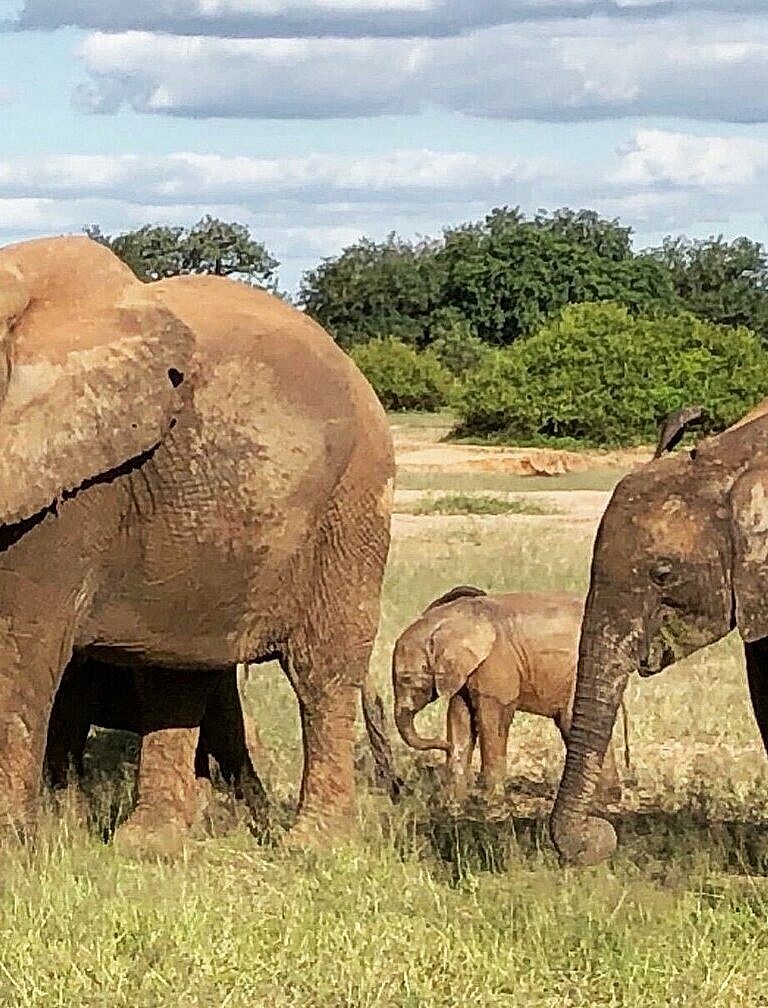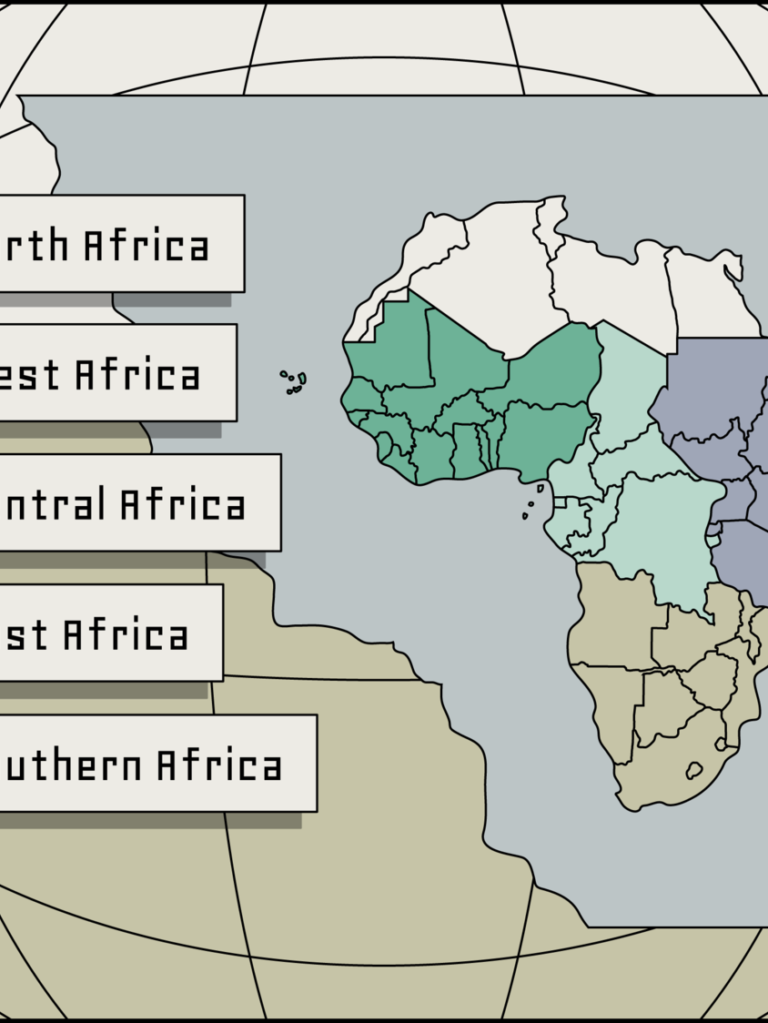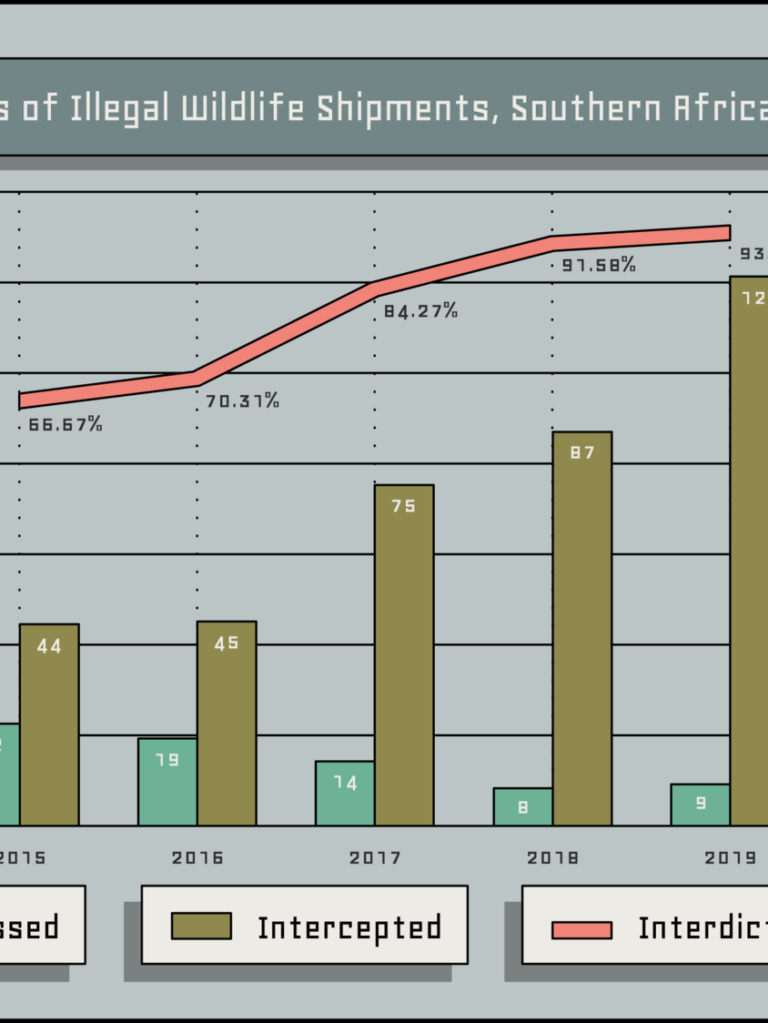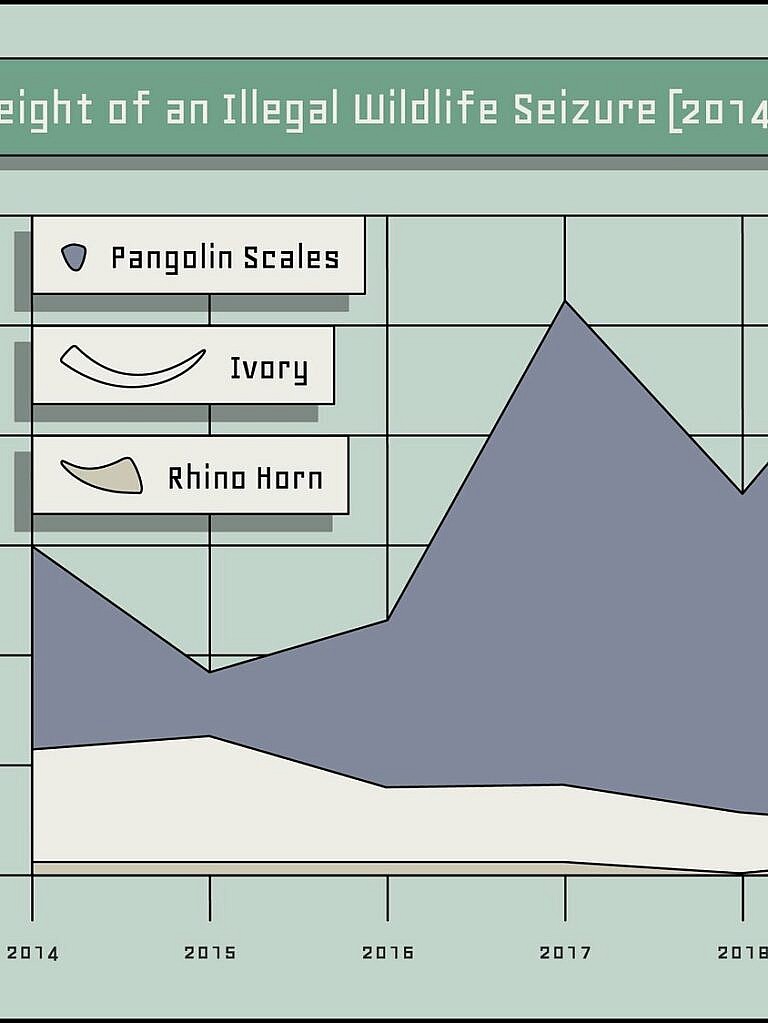Power in Numbers

To arm the counter wildlife trafficking community with accurate insights, C4ADS maintains a robust database of illegal wildlife seizures, with a primary focus on three high-value and high-demand wildlife products: ivory, rhino horn, and pangolins and their scales. Collected through multi-lingual open source research by a team of six analysts, seizures are updated on a daily basis. C4ADS’ Wildlife Seizure Database has recorded nearly 4,000 seizures of illegal wildlife products in the past 5 years. In analyzing seizure data, it’s possible to trace trends, assess the relative significance of different typologies, and develop a holistic picture of the mechanics of global wildlife trafficking.
Closed borders, cancelled flights, and halted commerce. The wave of the restrictions put in place in response to the COVID pandemic has not only affected the legal sectors of the economy, but the illicit ones, too. In the first five months of the 2020, C4ADS has tracked a 70% decrease in reported wildlife seizures in comparison with 2019. Wildlife seizure data is a window into trafficking trends. And as the COVID pandemic has highlighted, it can reveal how heavily illicit wildlife trafficking networks rely on licit sectors of the economy to move products. Without it, describing trends over time or identifying shifting routes exploited by wildlife traffickers becomes anecdotal analysis.
To arm the counter wildlife trafficking community with accurate insights, C4ADS maintains a robust database of illegal wildlife seizures, with a primary focus on three high-value and high-demand wildlife products: ivory, rhino horn, and pangolins and their scales. Collected through multi-lingual open source research by a team of six analysts, seizures are updated on a daily basis. C4ADS’ Wildlife Seizure Database has recorded nearly 4,000 seizures of illegal wildlife products in the past 5 years. In analyzing seizure data, it’s possible to trace trends, assess the relative significance of different typologies, and develop a holistic picture of the mechanics of global wildlife trafficking.

For each seizure, C4ADS reviews open source reporting to map out, to the extent possible, the who, what, where, when, why, and how behind each wildlife shipment. The Database incorporates information such as methods of obfuscating illegal wildlife products, individuals and networks responsible for trafficking events, and even common routes exploited by traffickers, which can serve as a valuable resource for not only understanding general trends, but also for enforcement prioritization and resource management.
Of course, seizure data is never perfect. Like any open source information, the data quality varies based on differences in coverage, including government reporting requirements, as well as public interest and media attention on the issue. C4ADS’ analysts work to minimize inconsistencies in reporting by comparing multiple sources and, where possible, consulting with local sources. Despite challenges posed by seizure data, it provides valuable insight into the illegal wildlife trade for non-governmental organizations, government authorities, and journalists who are working on the front lines to combat these illicit networks.
Discussed below are several select measurements derived from C4ADS’ Wildlife Seizure Database.
Key Measures: Interdiction Rate #

Seizure data can provide visibility into the capacity of law enforcement to interdict illegal wildlife shipments before export. To evaluate this capacity, C4ADS calculates an interdiction rate – the proportion of all known shipments that were intercepted within a jurisdiction – as compared to the total number of seizures which are known to have originated or transited through the same jurisdiction.
Consider interdiction trends in Southern Africa: in 2019, there were 130 publicly reported seizures associated with countries in this region. This includes seizures made in Southern Africa, as well as shipments that passed through Southern African jurisdictions before being seized elsewhere. Of those 130 seizure events, 121 were intercepted within Southern Africa, which translates to an interdiction rate of over 93%. The previous four years each recorded lower interdiction rates, suggesting gradual improvement in law enforcement’s detection abilities across the region. However, it is important to consider this number in its local context. A perceived increase in the interdiction rate could also be caused by shifting trafficking strategies, rather than absolute law enforcement improvements within the region. To proactively improve detection across the supply chain, authorities should work to implement data sharing between the seizure location and the shipments transit points.

Key Trends: Shipment Size #
Seizure data can also help determine the level of sophistication of the trafficking activity. Larger seizures of wildlife products suggest a more coordinated and complex trafficking attempt. Traffickers take on a greater financial risk for larger shipments, with capital invested in purchasing and consolidating the products, as well as transportation and export costs. This level of sophistication and coordination also relies on a complex understanding of local influences, and potentially corrupt actors, that can facilitate the shipments.
Examining the average weight of illegal wildlife shipments over time demonstrates the shift in sophistication of trafficking activity. From 2014 to 2019, the average weight of global ivory seizures decreased by 65%, the average weight of pangolin scale seizures increased by 78%, and the average weight of rhino horn seizures increased by 127%. Vital trends emerge from examining these seizure rates over time: In the last 2 years, Central and West Africa have emerged as the largest export point for ivory and pangolin scales. Such a shift may indicate a distinct business calculation on behalf of illegal wildlife trafficking syndicates: the risk of a large shipment being seized by authorities in Central and West Africa is relatively low in comparison with East and Southern Africa.

Key Regions: The Shift West #
Since 2015, there has been a near total decline – almost 99% – in the weight of ivory shipments originating from East Africa that were seized in Asia. At the same time, the level of ivory seizures made in East Africa has remained constant, while ivory seizures intercepted in Asia with known African origins now predominantly originate in Central and West Africa. Recent seizure data from Central and West Africa confirms this shift: the cumulative annual weight of ivory seizures originating from Central and West Africa has increased by 166%. This shift suggests that illegal wildlife shipments are more successfully exiting the continent from western jurisdictions, likely due to significant improvements in law enforcement capabilities in East Africa. These trends underlie the theory that law enforcement capacity building has a positive long-term impact on illegal wildlife trafficking.

Without seizure data, identifying West and Central African jurisdictions as hotspots for wildlife trafficking activity or acknowledging the benefits of improving data sharing between jurisdictions in Southern Africa is simply anecdotal. Therefore, as countries begin to ease the restrictions put in place in response to the COVID-19 pandemic and wildlife trafficking networks begin to jumpstart their operations, the media’s attention to seizures of wildlife products will be crucial to calibrating the global response and identifying wildlife trafficking trends, routes, and emerging hotspots. Seizure data derived from media and government reporting will provide key insight into a likely resurgence of wildlife trafficking activity. Law enforcement and other authorities will need to leverage this data more than ever to respond and adapt to new trafficking modus operandi.
The power of C4ADS’ Wildlife Seizure Database is rooted in the quality and the quantity of its data and amplified by the expertise and understanding of on-the-ground realities. The Database can help decision makers formulate policy, provide insight for journalists investigating illicit trafficking activities, and even assist law enforcement officers as they calibrate resources to shifting trends.
To request top line trends and analysis from C4ADS’ Wildlife Seizure Database, please email [email protected].






